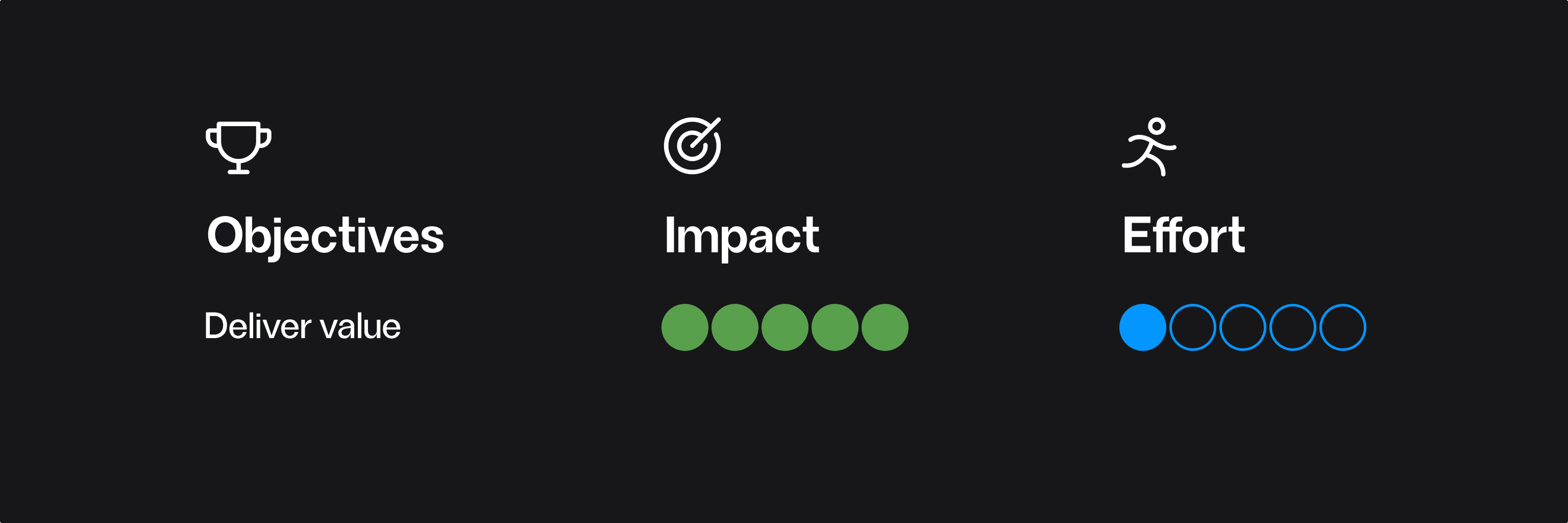Engineering
Best Practice: Implement continuous feedback loops for product iteration
Sep 12, 2024
In today’s fast-moving digital landscape, treating user feedback as a one-time step in development is no longer viable. Continuous feedback is essential; it informs product decisions and drives ongoing improvement. Successful product teams understand that regular user input is crucial for remaining responsive to evolving user needs, refining features, and maximising value over time.
Why Continuous Feedback Loops Matter
In product development, stagnation can be costly. Markets evolve, user preferences shift, and new competitors emerge. Establishing continuous feedback loops is key to delivering products that consistently meet user expectations. These loops provide insight into user interactions, enabling teams to identify strengths and areas for improvement.
- Align with user needs: Regular feedback keeps teams attuned to changing user behaviours. A feature that was once well-received may lose relevance as new trends emerge or users adapt their workflows.
- Inform product iteration: Feedback loops ensure product updates are based on real user data. Teams can prioritise changes driven by genuine user needs rather than assumptions.
- Enhance user satisfaction: When users know their feedback influences the product, they feel valued. This leads to stronger engagement, higher satisfaction, and increased loyalty.
Use Feedback Tools Integrated Into Your Product
To gather continuous feedback effectively, teams must implement the right tools and systems. Feedback tools such as Hotjar and UserVoice are designed to seamlessly capture user input through in-app surveys, heatmaps, and behaviour analytics. Integrating these tools directly into the product ensures real-time feedback without disrupting the user experience.
- Hotjar: This tool provides insights into user behaviour via heatmaps, session recordings, and surveys, helping teams understand user interactions and pinpoint areas requiring attention.
- UserVoice: As a feature request and feedback platform, UserVoice enables users to submit ideas and vote on desired features, creating a user-driven mechanism to prioritise updates.
Additionally, it’s vital to collect feedback across multiple channels, including post-launch surveys, customer support interactions, and community forums. Combining qualitative and quantitative feedback offers a comprehensive view of product performance.
Establish a Process for Incorporating Feedback
Feedback loops deliver value only when the insights they generate are acted upon. Without a structured process for integrating feedback into development cycles, valuable user input can be overlooked. Here are essential steps to ensure meaningful integration:
- Organise feedback collection: Gather feedback systematically, categorising it by insight type (e.g., usability issues, feature requests). This approach facilitates analysis and prioritisation.
- Prioritise impact: Not all feedback warrants action. Assess insights based on potential impact on user experience and alignment with the product vision. Prioritise features that benefit a large portion of users or address critical pain points.
- Incorporate feedback into sprints: Establish a formal process for feeding user feedback into development cycles. Allocate time during each sprint to address critical user input or integrate it into planning sessions for future releases.
- Close the loop with users: After implementing user feedback, communicate to users how their input shaped the product. This not only boosts engagement but also fosters trust and loyalty. Acknowledging user contributions reinforces their value and encourages ongoing feedback.
Long-Term Benefits of Continuous Feedback Loops
Continuously collecting, analysing, and integrating feedback into product development yields significant long-term benefits for both the team and users.
- Accelerated product iteration: Continuous feedback enables quicker iterations. By regularly addressing user pain points and implementing improvements, the product evolves in line with user expectations and market demands.
- Minimised risk of missed opportunities: Regular feedback helps teams identify shifting user needs and market trends, ensuring agility and responsiveness to avoid falling behind competitors.
- Improved product-market fit: Consistent feedback and subsequent action ensure the product aligns with user expectations, enhancing its market relevance and increasing long-term success chances.
- Stronger customer relationships: Engaging users in the product development process cultivates robust relationships. When users feel heard and their needs prioritised, they are more likely to advocate for the product.
Conclusion
Implementing continuous feedback loops is among the most effective strategies for engineering teams to ensure their product remains relevant, user-centred, and competitive. By leveraging tools like Hotjar and UserVoice for real-time feedback and establishing a structured process for integration, teams can deliver impactful, user-driven updates.
Ultimately, continuous feedback loops empower teams to create products that users truly value. In a landscape where user preferences and market conditions are in constant flux, this approach is not merely a best practice—it is essential for long-term success.







